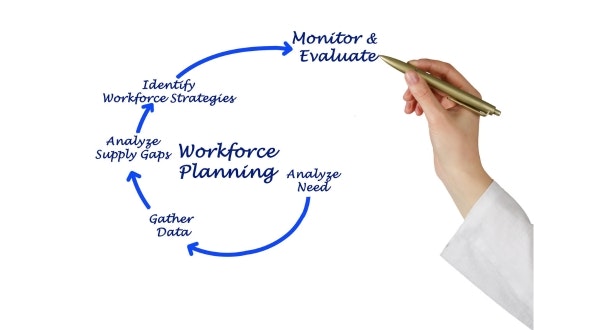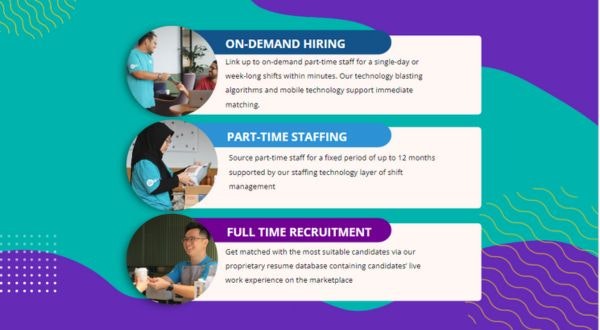An Outline of Workforce Planning Process
Human Resource / 08 Dec 2023

In the ever-evolving landscape of business, the strategic management of human capital has become a cornerstone of organizational success. Today, as businesses navigate the complexities of the global marketplace, workforce planning stands out as a crucial element in achieving not just short-term goals but also long-term sustainability. At the heart of this strategic endeavor lies the seamless alignment of human resources with overarching business objectives.
In this comprehensive guide, we will delve into the intricacies of the workforce planning process, unraveling its significance in the realm of HR management. From understanding the core business goals to implementing cutting-edge workforce management solutions, this exploration aims to provide a roadmap for HR professionals and business leaders alike.
As we embark on this journey, we'll discover how effective workforce planning is not merely a reactive response to immediate needs but a proactive strategy that propels organizations toward continued growth and adaptability.
1. Understanding Business Goals and Objectives:
In this section, elaborate on the importance of aligning workforce planning with the overall business strategy. Discuss how a clear understanding of organizational goals helps in shaping the direction of workforce planning efforts.
Provide examples of how businesses can set SMART (Specific, Measurable, Achievable, Relevant, Time-bound) goals and ensure that workforce planning supports these objectives.
2. Environmental Analysis:
Examine the external and internal factors that influence workforce needs. Discuss the significance of staying abreast of industry trends, economic conditions, and technological advancements. Explain how a comprehensive environmental analysis allows businesses to anticipate changes and adjust their workforce strategies accordingly.
3. Workforce Demand Forecasting:
Detail the process of estimating future talent needs based on business goals and environmental analysis. Discuss the role of data analytics and predictive modeling in workforce demand forecasting. Provide examples of how businesses can forecast demand for different roles and skill sets.
4. Supply Analysis:
Explore the assessment of the current workforce, emphasizing the importance of understanding the skills and capabilities of existing employees. Discuss the tools and methods used to evaluate the supply side of the workforce, such as skill assessments, performance reviews, and employee surveys.
5. Gap Analysis:
Explain the process of comparing demand and supply data to identify gaps in the workforce. Emphasize the importance of prioritizing critical areas where skill shortages may impact business performance. Provide examples of how organizations can conduct effective gap analysis and the steps they can take to address identified gaps.
6. Recruitment and Staffing:
Discuss the development of targeted recruitment strategies to address workforce gaps. Explore various channels for talent acquisition, including online platforms, social media, networking events, and partnerships with educational institutions. Highlight the importance of a diverse recruitment approach to attract a range of talents.

GoGet is a Digital Recruitment and Staffing platform. Learn more on our homepage.
7. Workforce Development and Training:
Detail the implementation of training programs to upskill existing workers. Discuss the role of continuous learning in fostering a culture of growth and development. Provide examples of successful development initiatives and the impact they can have on both individual and organizational performance.
8. Succession Planning:
Explain the identification of key positions and potential successors within the organization. Discuss the development of a succession plan to ensure a smooth transition during staff turnover or promotions. Highlight the role of mentoring and professional development in preparing employees for future leadership roles.
9. Diversity and Inclusion:
Explore the incorporation of diversity and inclusion strategies in workforce planning. Discuss the benefits of a diverse workforce in driving innovation, improving workers’ morale, and enhancing problem-solving capabilities. Provide examples of successful diversity and inclusion initiatives in the workplace.
10. Implementing Workforce Management Solutions:
Discuss the integration of technology-driven solutions for efficient workforce management. Explore HR tech tools that streamline recruitment, scheduling, and performance tracking. Provide examples of how businesses have successfully leveraged technology to enhance their workforce management processes.
11. Monitoring and Evaluation:
Detail the establishment of metrics and key performance indicators (KPIs) to monitor workforce planning effectiveness. Discuss the importance of regular assessments to track the impact of workforce planning on organizational goals. Provide guidance on adjusting strategies based on monitoring results to ensure continuous improvement.
Conclusion:
Summarize the key takeaways from the workforce planning process, emphasizing its critical role in achieving organizational success. Reiterate the dynamic and continuous nature of workforce planning, encouraging businesses to view it as an ongoing strategic process rather than a one-time activity.
Share this article
